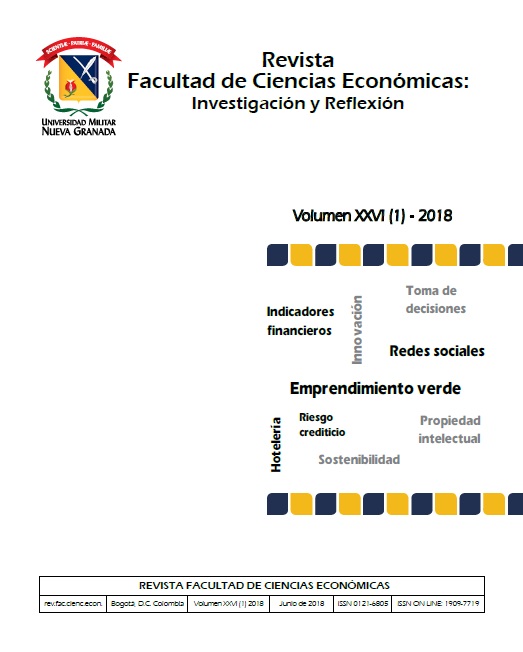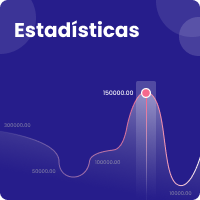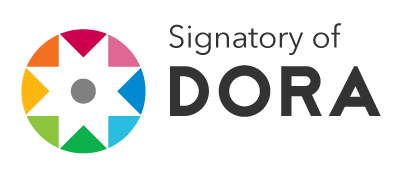Tecnologías de información y comunicación para el turismo inclusivo
Resumen
El propósito de este trabajo es presentar las tecnologías de información y comunicación que tienen potencial para permitir la inclusión de personas con discapacidad como clientes de los destinos turísticos. Las tecnologías fueron identificadas a través de la búsqueda de información en bases de datos académicas y páginas web de empresas proveedoras de tecnologías de información para personas en estado de discapacidad, indicando cómo pueden ser usadas en las actividades de la cadena de valor turística. Se encontró que las tecnologías usadas en los campos de entretenimiento, educación, salud y artefactos diseñados para facilitar la vida de personas con discapacidad, pueden ser utilizados en la industria turística, asistiéndolos en funciones mentales, sensoriales, de voz y habla, neuromusculoesqueléticas y de movimientoDescargas
Referencias bibliográficas
Abril, R. (2003). Libro blanco. Plan para la accesibilidad. Madrid: Ministerio de Trabajo y Asuntos Sciailes de Espa-a. Retrieved from http://ddd.uab.cat/record/45028
AENOR. (2007). Accesibilidad universal. Asociación espa-ola de Normalización y certificación. Retrieved from http://www10.ujaen.es/sites/default/files/users/spe/SGAU-UJA/UNE_170001-1=2007.pdf
Altinay, Z., Saner, T., Bahçelerli, N. & Altinay, F. (2016). The Role of Social Media Tools : Accessible Tourism for Disabled Citizens. Educaional Technology and Society, 19(1), 89–99. Retrieved from http://www.jstor.org/stable/jeductechsoci.19.1.89?seq=1#page_scan_tab_contents
Arboleda, C., Garcia, E., Posada, A. & Torres, R. (2009). Dise-o y construcción De un prototipo De interfaz cerebro-computaDor para facilitar la comunicación De personas con DiscapaciDaD motora. Revista EIA, 1, 105–115. Retrieved from http://repository.eia.edu.co/bitstream/11190/209/1/REI00103.pdf
Bartfai, A. & Boman, I.-L. (2011). Policies concerning assistive technology and home modification services for people with physical and cognitive disabilities in Sweden. NeuroRehabilitation, 28, 303–308. http://doi.org/10.3233/NRE-2011-0658
Benda, P., Havlícek, Z., Lohr, V. & Havránek, M. (2011). ICT helps to overcome disabilities. Agris On-Line Papers in Economics and Informatics, 3(4), 63–69. Retrieved from http://online.agris.cz/
Bizjak, B., Knezeevic, M. & Cvetreznik, S. (2011). Attitude change towards guests with disabilities. Reflections From Tourism Students. Annals of Tourism Research, 38(3), 842–857. http://doi.org/10.1016/j.annals.2010.11.017
https://doi.org/10.1016/j.annals.2010.11.017
Brida, J., Monterubbianesi, P. & Zapata, S. (2011). Impactos del turismo sobre el crecimiento económico y el desarrollo . El caso de los principales destinos. Pasos, 9, 291–303. Retrieved from http://www.redalyc.org/articulo.oa?id=88117284006
Buhalis, D. & Law, R. (2008). Progress in information technology and tourism management: 20 years on and 10 years after the Internet—The state of eTourism research. Tourism Management, 29(4), 609–623. http://doi.org/10.1016/j.tourman.2008.01.005
https://doi.org/10.1016/j.tourman.2008.01.005
Busby, G. (2006). Historic , Contemporary , and Future Effects of Information and Communication Technologies ( ICT ) on People with Impairments. In Perspectives and Policies on ICT in Society (p. 263). Retrieved from http://www.springer.com/gb/book/9780387255873
Calvo, A., Navarro, A. & Peria-ez, R. (2015). Tourism for all and performance: An analysis of accessibility management in hotels. In Achieving Competitive Advantage through Quality Management (p. 312). Springer International Publishing. http://doi.org/10.1007/978-3-319-17251-4
https://doi.org/10.1007/978-3-319-17251-4
Castells, M. (2001). La era de la información: Economía, sociedad y cultura (3rd ed.). Madrid: Siglo 21 Editores.
Caulfield, B., Conway, T. & Micera, S. (2012). European study of research and development in mobility technology for persons with disabilities. Journal of NeuroEngineering and Rehabilitation, 9, 23. http://doi.org/10.1186/1743-0003-9-23
https://doi.org/10.1186/1743-0003-9-23
Cobo, E., Sandoval, C. & Alvarado, Y. (2012). Magnitud de la discapacidad en Boyacá, Colombia. Revista de Salud Pública, 14(5), 776–778. Retrieved from http://www.redalyc.org/articulo.oa?id=42229127005
Colak, H. E. & Aydinoglu, A. C. (2006). Determining Regional Tourism Development Strategies of East Black Sea Region of Turkey by GIS. In XXIII FIG Congress (pp. 1–9). munich, Germany. Retrieved from https://www.fig.net/resources/proceedings/fig_proceedings/fig2006/papers/ts72/ts72_03_colak_aydinoglu_0545.pdf
Comunello, F., Mulargia, S., Belotti, F. & Fernández-Ardèvol, M. (2015). Evaluating All-Inclusive ICT with Developers, end users and stakeholders. Human Aspects of IT for the Aged Population., 9193, 439–450. http://doi.org/10.1007/978-3-319-20892-3
https://doi.org/10.1007/978-3-319-20892-3
Continuo, A. (2013). El dispositivo de discapacidad. Tesis Psicológica, 8(1), 174–183. Retrieved from http://www.redalyc.org/articulo.oa?id=139029198013
Cook, A. (2008). Using the web and ICT to enable persons with disabilities. Communications in Computer and Information Science, 25, 3–18. http://doi.org/10.1007/978-3-540-92219-3_1
https://doi.org/10.1007/978-3-540-92219-3_1
Coppola, S., Sakornsatian, S., Thongkuay, S. & Trevittaya, P. (2012). Innovative practice in accessible and inclusive tourism. World Federation of Occupational Therapists Bulletin, 66, 43–46. http://doi.org/10.1179/otb.2012.66.1.016
https://doi.org/10.1179/otb.2012.66.1.016
Dekelver, J., Kultsova, M., Shabalina, O., Borblik, J., Pidoprigora, A. & Ramanenko, R. (2015). Design of movil aplication for people with intellectual disabilities. Communications in Computer and Information Science, 535, 637–654. http://doi.org/10.1007/978-3-319-23766-4
https://doi.org/10.1007/978-3-319-23766-4
Delvigne, M., Santos, A., Tardot, A., Devilleger, M., Fortin, A., Maitre, T., … Dussartre, A. (2011). Using code of colors through ICT and home automation technologies in the housing environment context for persons with loss of autonomy. Lecture Notes in Computer Science, 6719 LNCS(6719), 200–204. http://doi.org/10.1007/978-3-642-21535-3_26
Domínguez, T., Darcy, S. & Alén, E. (2015). Competing for the disability tourism market - A comparative exploration of the factors of accessible tourism competitiveness in Spain and Australia. Tourism Management, 47, 261–272. http://doi.org/10.1016/j.tourman.2014.10.008
https://doi.org/10.1016/j.tourman.2014.10.008
Domínguez, T., Fraiz, A. & Alén, M. (2015). Discapacidad y alojamientos turísticos en Espa-a Trinidad Domínguez Vila. Pasos. Revista de Turismo Y Patrimonio Cultural, 13(4), 771–787. http://doi.org/10.1108/JTF-08-2015-0043
Drucker, P. (1990). Llega una nueva organización a la empresa. In Gestiónd el Conocimiento (pp. 1–21). Harvard Business Review.
Egea, C. & Sarabia, A. (2001). Clasificaciones de la OMS sobre discapacidad. Artículos Y Notas. Retrieved from http://usuarios.discapnet.es/disweb2000/art/ClasificacionesOMSDiscapacidad.pdf
García, M. (2015). Discapacidad. Especial referencia a la educación. RIPS, 14(1), 193–208. Retrieved from http://www.redalyc.org/articulo.oa?id=38041418009
García, A. & Rodríguez, C. (2000). Nuevas tecnologías y personas con discapacidad New technologies and people with disability. Psycholsocial Intervention, 9(3), 283–296. Retrieved from http://www.redalyc.org/articulo.oa?id=179818254002
Göksu, İ. & Atici, B. (2013). Need for Mobile Learning: Technologies and Opportunities. Procedia - Social and Behavioral Sciences, 103, 685–694. http://doi.org/10.1016/j.sbspro.2013.10.388
Gómez, L., Avella, A. & Moralez, L. (2015). Observatorio de Discapacidad de Colombia. Revista Facultad Nacional de Salud Pública, 33(2), 277–285. http://doi.org/10.17533/udea.rfnsp.v33n2a14
Gutierrez, P. & Martorell, A. (2011). Las personas con discapacidad intelectual ante las TIC. Comunicar, 18(36), 173–180. http://doi.org/10.3916/C36-2011-03-09
Hall, T., Cohen, N., Vue, G. & Ganley, P. (2015). Addressing Learning Disabilities With UDL and Technology: Strategic Reader. Learning Disability Quarterly, 38, 72–83. http://doi.org/10.1177/0731948714544375
Hersh, M. A. & Mouroutsou, S. (2015). Learning Technology and Disability: Overcoming Barriers to Inclusion: Evidence from a Multi-Country Study. IFAC-PapersOnLine, 48(24), 83–88. http://doi.org/http://dx.doi.org/10.1016/j.ifacol.2015.12.061
Ivanović, A. (2015). Business opportunity and social responsibility: Growing importance of accessible e-tourism for senior tourists and persons with disabilities. In New business oportunity in the growing E-Tourism industry. (pp. 303 – 336). IGI Global. http://doi.org/10.4018/978-1-4666-8577-2.ch016
Jimenéz, P. & Aquilino, G. (2012). Propuesta de un modelo de competitividad de destinos turísticos. Estudios Y Perspectivas En Turismo, 21, 977–995. Retrieved from http://www.scielo.org.ar/pdf/eypt/v21n4/v21n4a10.pdf
Jurado, M. (2014). El turismo accesible en Andalucía y Portugal. Cuadernos de Turismo, (33), 121–150. http://doi.org/10.12795/rea.2014.i31.01
Kaplinsky, R. & Morris, M. (2000). A hand book for value chain research. Institute for Development Studies: Brighton, UK, (September), 4–7. Retrieved from https://www.ids.ac.uk/ids/global/pdfs/VchNov01.pdf
Kascak, L., Lee, S., Liu, E. & Sanford, J. (2015). The expansion of a Scheme about accesibility in tourism at the cultural sector. Springer International Publishing Switzerland. Retrieved from http://www.scopus.com/inward/record.url?eid=2-s2.0-84947232122&partnerID=tZOtx3y1
Koutkias, V., Kaklanis, N. & Votis, K. (2016). An integrated semantic framework supporting universal accessibility to ICT. Universal Access in the Information Society, 15, 49–62. http://doi.org/10.1007/s10209-014-0372-1
Lancioni, G. E., Singh, N. N., O'Reilly, M. F., Sigafoos, J., Boccasini, A., Alberti, G. & Lang, R. (2014). People with Multiple Disabilities Use Basic Reminding Technology to Engage in Daily Activities at the Appropriate Times. Journal of Developmental and Physical Disabilities, 26, 347–355. http://doi.org/10.1007/s10882-014-9373-5
Lancioni, G. E., Singh, N., O'Reilly, M., Sigafoos, J., Oliva, D., Alberti, G. & Buono, S. (2014). Persons with Multiple Disabilities Choose Among Environmental Stimuli Using a Smile Response and a Technology-Aided Program. Journal of Developmental and Physical Disabilities, 26, 183–191. http://doi.org/10.1007/s10882-013-9353-1
Leeuwen, E. & Nijkamp, P. (2011). Operational advances in tourism Research Memorandum 2011-19. Ansterdam. Retrieved from http://dspace.ubvu.vu.nl/bitstream/handle/1871/19532/rm 2011-19.pdf?sequence=2
Li-Tsang, C., Chan, C., Lam, C., Hui-Chan, C. & Yeung, S. (2004). Evaluations of an information and communication technology (ICT) training programme for persons with intellectual disabilities. Lecture Notes in Computer Science, 3118, 1032–1038. http://doi.org/10.1007/978-3-540-27817-7_152
Li-Tsang, C., Lee, M., Yeung, S., Siu, A. & Lam, C. S. (2007). A 6-month follow-up of the effects of an information and communication technology (ICT) training programme on people with intellectual disabilities. Research in Developmental Disabilities, 28, 559–566. http://doi.org/10.1016/j.ridd.2006.06.007
Luque, D. & Luque, M. (2012). Aspectos psicoeducativos en las relaciones de las TIC y la discapacidad intelectual. Revista Internacional de Psicología Y Educación, 14(1), 27–48. Retrieved from http://www.redalyc.org/articulo.oa?id=80224034003
Mclane, K. (2007). Student Progress Monitoring. Special Education. Washington. DC: National Center on Student Progress Monitoring. Retrieved from http://www.studentprogress.org/doc/CurriculumBasedMeasurement.pdf
Menzel, N. & Weldig, A. (2011). The Long Tail of Tourism. In Inclusive tourism (pp. 201–211). http://doi.org/10.1007/978-3-8349-6231-7
Ministerio de Comercio Industria y Turismo. (2011). Plan Sectorial de Turismo 2011-2014 "Turismo: factor de prosperidad para Colombia." Bogotá.
Monterrubio, C. (2009). Comunidad receptora: Elemento esencial en la gestión turística. Gestión Turistica, 11, 101–111. Retrieved from http://www.redalyc.org/articulo.oa?id=223314808005
Moreno, M., Rodríguez, M., Gutierrez, M., Ramírez, L. & Barrera, O. (2006). Aquichan. Aquichan, 6(1), 78–91. Retrieved from http://www.redalyc.org/articulo.oa?id=74160109
Navas, P., Verdugo, M. A. & Gómez, L. E. (2008). Diagnóstico y clasificación en discapacidad intelectual Diagnosis and classification on intellectual. Intervención Psicosocial, 17(2), 143–152. Retrieved from http://www.redalyc.org/articulo.oa?id=179814018004 https://doi.org/10.4321/S1132-05592008000200004
Nicholl, H., Doyle, C. & College, T. (2013). Identifying the types of technology that are used by children with intellectual disabilities and associated complex needs living at home in Ireland. British Journal of Learning Disabilities, 41, 229–236. http://doi.org/10.1111/bld.12045
Nicolae, J. C. & Sabina, D. B. M. (2012). The ICT Implication on CSR in the Tourism of Emerging Markets. Procedia Economics and Finance, 3(12), 702–709. http://doi.org/10.1016/S2212-5671(12)00217-1
Niemeijer, A., Frederiks, B., Depla, M., Eefsting, J. & Hertogh, C. (2013). The place of surveillance technology in residential care for people with intellectual disabilities: Is there an ideal model of application. Journal of Intellectual Disability Research, 57(march), 201–215. http://doi.org/10.1111/j.1365-2788.2011.01526.x
Norton, D. & Kaplan, R. (2000). El cuadro de mando integral. Edisiones Gestión.
Obi, T., Ishmatova, D. & Iwasaki, N. (2013). Promoting ICT innovations for the ageing population in Japan. International Journal of Medical Informatics, 82(4), e47–e62. http://doi.org/10.1016/j.ijmedinf.2012.05.004
Oliver, A., Sancho, P. & Galiana, L. (2012). Calidad de la empleabilidad en universitarios con discapacidad. Revista Iberoamericana de Psicologia Y Salud., 3(2), 109–123. Retrieved from http://www.redalyc.org/articulo.oa?id=245124456002
OMS. (2001). Clasificación Internacional del Funcionamiento, de la Discapacidad y de la Salud. (OMS, Ed.), Revista Espa-ola de Salud Pública (Vol. 76). http://doi.org/10.1097/01.pep.0000245823.21888.71
OMS. (2011). Informe mundial sobre la discapacidad. Educación. Organización Mundial de la Salud. Retrieved from http://who.int/disabilities/world_report/2011/summary_es.pdf
OMT. (2014). Recomendaciones de la OMT por un turismo accesible para todos. Madrid: OMT. Retrieved from http://ethics.unwto.org/es/publication/recomendaciones-de-la-omt-por-un-turismo-accesible-para-todos
OMT. (2015). Recomendaciones de la OMT sobre accesibilidad de la información turística. OMT.
ONU. (2002). Departamento de asuntos Económicos y sociales de las naciones Unidas División de Población, World Population Ageing: 1950-2050. Nueva York. Retrieved from http://www.un.org/esa/population/publications/worldageing19502050/pdf/001world.pdf
ONU. (2008). Convención sobre los Derechos de las Personas con Discapacidad. Retrieved from http://www.un.org/esa/socdev/enable/documents/tccconvs.pdfnhttp://www.acnur.org/t3/fileadmin/scripts/doc.php?file=biblioteca/pdf/6401
Ospina, M. (2010). Discapacidad y sociedad democrática. Revista Derecho Del Estado, 24, 143–164. Retrieved from http://www.redalyc.org/articulo.oa?id=337630234007
Ozols, M. (2007). Actividad física y discapacidad. MH Salud, 4(2), 1–5. Retrieved from http://www.redalyc.org/articulo.oa?id=237017534001
Packer, T. L., McKercher, B. & Yau, M. K. (2007). Understanding the complex interplay between tourism, disability and environmental contexts. Disability and Rehabilitation, 29(February), 281–292. http://doi.org/10.1080/09638280600756331
Padilla, A. (2010). Discapacidad : contexto , concepto y modelos * Disability : context , concept and models. International Law, (16), 381–414. Retrieved from http://www.redalyc.org/articulo.oa?id=82420041012
Pagán, R. (2012). Time allocation in tourism for people with disabilities. Annals of Tourism Research, 39(3), 1514–1537. http://doi.org/10.1016/j.annals.2012.04.005
Parra, C. (2013). Estructura institucional de la discapacidad en el Estado colombiano. Civilizar. Ciencias Sociales Y Humanas, 13(24), 79–102. Retrieved from http://www.redalyc.org/pdf/1002/100228407007.pdf
Porter, M. (1991). La ventaja competitiva de las naciones. Ed Vergara. Argentina (Vergara). Buenos Aires, Argentina.
Porter, M. E. (2001). Strategy and the Internet. Harvard Business Review, 1–20. Retrieved from http://web.uncg.edu/bae/lsiyer/ec_common/articles/strategy_and_internet_porter.pdf
Puehretmair, F., & Woess, W. (2008). A flexible concept to establish accessibility information in tourism web-pages. Computers Helping People with Special Needs, Proceedings, 5105, 981–988. Retrieved from ://WOS:000258398900147
Pühretmair, F. (2004). It's time to make eTourism accessible. Computers helping people with special needs. Retrieved from http://link.springer.com/chapter/10.1007/978-3-540-27817-7_41
Quintero, P., Bernal, C. & López, H. (2005). La competitividad turística de Cartagena de Indias. In La competitividad turística de Cartagena de Indias: análisis del destino y posicionamiento en el mercado (p. 121). Cámara de Comercio de Cartagena. Retrieved from file:///C:/Users/Diana/Downloads/2009062513_INV_NO4LAC-1.PDF
Ratliffe, K. T., Rao, K., Skouge, J. R. & Peter, J. (2012). Navigating the currents of change: technology, inclusion, and access for people with disabilities in the Pacific. Information Technology for Development, 18(3), 209–225. http://doi.org/10.1080/02681102.2011.643207
Reguera, A. & López, A. (2014). Urue-a , Villa del Libro . Aproximación a la imagen de un destino. Universodad de Valladolid. Retrieved from https://uvadoc.uva.es/bitstream/10324/5990/1/TFG-N.98.pdf
Ripat, J. D. & Woodgate, R. L. (2011). Locating assistive technology within an emancipatory disability research framework. Technology and Disability, 23, 87–92. http://doi.org/10.3233/TAD-2011-0315
Røssvoll, T. H. & Fuglerud, K. S. (2013). Best Practice for Efficient Development of Inclusive ICT. Berlin: Springer-Verlag. Retrieved from link.springer.com/chapter/10.1007/978-3-6 https://doi.org/10.1007/978-3-642-39188-0_11
Rumetshofer, H. & Wolfram, W. (2004). Tourism information systems promoting barrier-free tourism for people with disabilities. Computers Helping People with Special Needs, 627. http://doi.org/10.1007/978-3-540-27817-7
Sanmargaraja, S. & Wee, S. T. (2015). The need of accessible accommodation in Malaysian tourism sector: Case study in Endau-Rompin and Ledang Hills National Parks. International Business Management, 9(1), 139–144. http://doi.org/10.3923/ibm.2015.139.144
Schreuer, N., Keter, A. & Sachs, D. (2007). Accessibility to Information and Comunications technology for the Social Participation of Youths with Disabilities: A two-way Street. Behavioral Sciences & the Law, 28, 211–223. http://doi.org/10.1002/bsl
Scott, M., Spyridonis, F. & Ghinea, G. (2015). Designing for designers: Towards the development of accessible ICT products and services using the VERITAS framework. Computer Standards & Interfaces, 42, 113–124. http://doi.org/10.1016/j.csi.2015.05.004
Seng, B. (2015). ICT for sutainable development of the tourism industry in Cambodia. Springer International Publishing Switzerland (Vol. 8944).
Simsek, Ö., Altun, E. & Ates, A. (2010). Developing ICT skills of visually impaired learners. Procedia - Social and Behavioral Sciences, 2, 4655–4661. http://doi.org/10.1016/j.sbspro.2010.03.745
Stock, S. E., Davies, D. K., Wehmeyer, M. L. & Lachapelle, Y. (2011). Emerging new practices in technology to support independent community access for people with intellectual and cognitive disabilities. NeuroRehabilitation, 28, 261–269. http://doi.org/10.3233/NRE-2011-0654
Suriá, R., & Escalona, J. (2004). Integración, Turismo y discapacidad : ¿son accesibles los hoteles para als personas con discapacidad física? Revista de Turismo Y Patrimonio Vultural, 12(1), 209–2018. Retrieved from http://www.redalyc.org/articulo.oa?id=88129335016
Toboso, M. (2011). Rethinking disability in Amartya Sen's approach: ICT and equality of opportunity. Ethics and Information Technology, 13(Stiker 1999), 107–118. http://doi.org/10.1007/s10676-010-9254-2
Toffler, A. (1990). El cambio de poder. Plaza & Jones Editores S.A.
Torii, I., Ohtani, K., Niwa, T. & Ishii, N. (2013). Development of Support Applications for Elderly and Handicapped People with ICT Infrastructure. In Communications in Computer and Information Science (pp. 266–270). Retrieved from http://link.springer.com/chapter/10.1007/978-3-642-39473-7_54 https://doi.org/10.1007/978-3-642-39473-7_54
Torres, P. & Merrero, M. (2014). Algunas Consideraciones Sobre La Medición de La Competitividad De Destinos Turísticos. Retos Turísticos, 2(2). Retrieved from http://retos.mes.edu.cu/index.php/retojs/article/view/60
Ulbricht, V. R., Vanzin, T., Amaral, M., Vilarouco, V., De Quevedo, S. R. P., Moretto, L. A. M. & Flores, A. R. B. (2012). A tool to facilitate including accessible content in moodle to the person with visual impairment. Procedia Computer Science, 14(Dsai), 138–147. http://doi.org/10.1016/j.procs.2012.10.016
UNWTO. (2014). Manual sobre Turismo Accesible para Todos: Principios, herramientas y buenas prácticas. Retrieved from http://www.accessibletourism.org/resources/manualturismoaccemoduloipruebadia14final1revisadov2.pdf
Ventura, V. (2011). El turismo, su cadena productiva y el desarrollo incluyente en América Latina : los casos de Brasil y México. Working Paper, 138, 2–78.
Weber, H. & Zink, K. (2014). Boon and Bane of ICT Acceleration for Vulnerable Populations. In The impact of ICT on quality of working life (pp. 177–190). Germany: Institute of Technology and Work University of Kaiserslautern. http://doi.org/10.1007/978-94-017-8854-0
Wise, P. H. (2012). Emerging technologies and their impact on disability. Future of Children, 22(1), 169–191. http://doi.org/10.1177/135676679400100110
WTO. (2016). Annual Report 2015. Annual Report 2015.
Wu, Y. C. J. & Cheng, M. J. (2008). Accessible tourism for the disabled: Long tail theory. Lecture Notes in Computer Science (Including Subseries Lecture Notes in Artificial Intelligence and Lecture Notes in Bioinformatics), 5288 LNAI, 565–572. http://doi.org/10.1007/978-3-540-87781-3_61
Zhang, Y., Gan, Y., Cham, H., Wang, M.-T., Willett, J. B., Eccles, J. S., … Appleton, J. J. (2012). School Engagement Trajectories and Their Differential Predictive Relations to Dropout. Journal of Adolescence, 74(3), 274–283. http://doi.org/10.1002/pits











